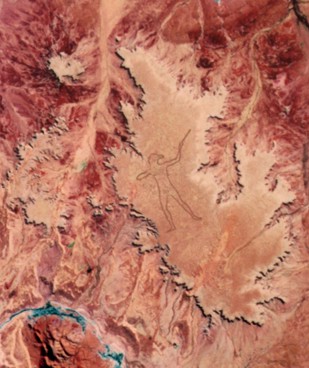Many cultures on Earth mummify
the dead. There are even cultures that made mummies inadvertently by burying
them under the right conditions. Therefore, mummies are relatively common.
However, it is nearly unheard of for people to mummify themselves, but it has
happened. In Japan there are more than two-dozen mummies, known as the
Sokushinbutsu. These Sokushinbutsu were very dedicated monks who committed
suicide for the sake of mummifying themselves and achieving holiness.
The monks who performed
Sokushinbutsu were followers of an ancient form of Buddhism known as Shugendo.
For Shugendo monks, performing self-mummification was not suicide. It was the ultimate act of self-denial and a way
to separate themselves from the material world. Of course, that didn’t change
the fact that it was suicide to the rest of the world and so, the gruesome practice
was made illegal in Japan in the late 1800's.
Sokushinbutsu began with the
monk drastically changing his diet. Most sources say that the monk would go for
three years on a diet of nuts and seeds. He would also begin exercising
vigorously, in order to shed any excess body fat that might hinder the mummification
process. After three years of this diet, the monk would then change his diet to
one of bark and roots for another three years. After a time, the monk would
also begin ingesting a poisonous tea made from sap or arsenic-laced water. The
amount of poison in these drinks was presumably nonlethal. The drinks were
meant to aid in the loss of fat in life and to deter insects after the monk’s
death. The time frame of this diet and its progression differ from source to
source, but the contents are certain.
At the end of the second
three-year period, the monk would then place himself in a small coffin-like box
(seemingly of brick, stone or wood), in which he could do nothing but sit in
the lotus position. A breathing tube was introduced into the chamber and the monk
given a bell before the box was closed. The monk would then ring the bell every
day until he starved to death. When the bell no longer rang, his fellow monks
knew he was dead. After a period of one thousand days, they would open the box
and determine whether the monk had achieved Sokushinbutsu. If the body had
begun to decay, the box was permanently sealed and buried. If the body had not,
the monk had achieved Sokushinbutsu and he was reverently put on display and
worshiped as Buddha.
Today, there are a little more
than two-dozen Sokushinbutsu in Japan. Eight of these mummified monks are on
display in the Dainichi and Churenji temples. They are still thought of as
Buddha by their brethren. To the rest of us, they are either testaments to the
amazing power the mind can have over the body, or they are proof of how
horribly far a person’s beliefs can take them. Either way, it is hard not to be
amazed at the ability of Sokushinbutsu to carry out their very own
mummification.
